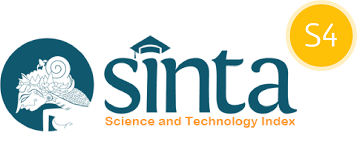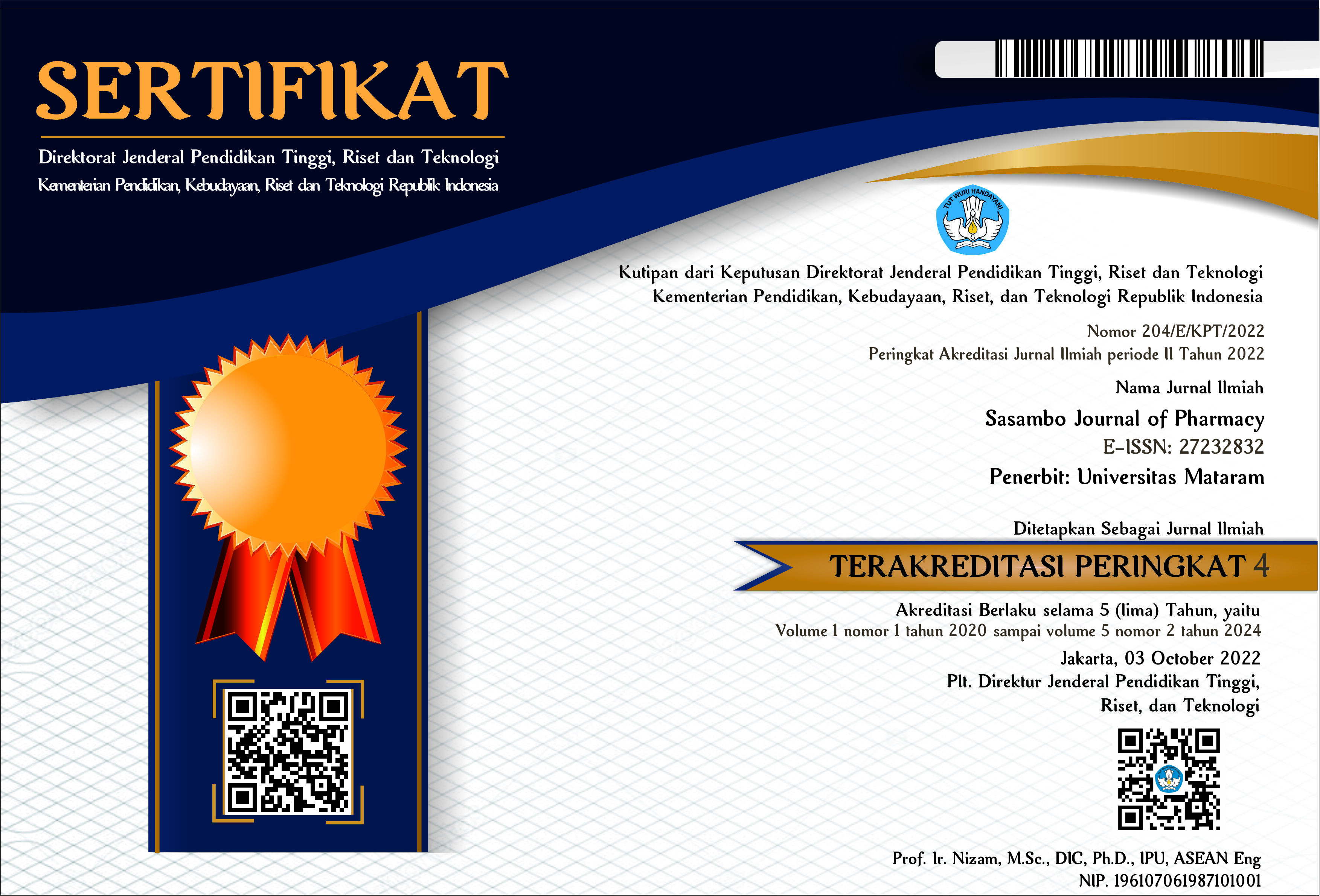Microbial pattern of urinary catheterization infection at Wahidin Sudirohusodo Hospital
DOI:
10.29303/sjp.v2i1.47Downloads
Abstract
Infectious disease still remains a serious problem in Indonesia and worldwide, it leads to use of uncontrollable anti-microbial treatment with cause to drug resistance. With unsupported condition for using a sensitivity test prior to antimicrobial treatment, a common guide for choosing an antimicrobial agent for infection of specific specimen is needed. The aims of this research is to determine the pattern of bacteria, more specific specimen is urine. This research was an observational Experimental consecutive sampling study, sample for this research were taken from inpatient room of Wahidin Sudirohusodo Hospital of Makassar during 2019-2020. The largest number of pathogenic bacteria that potentially becoming infection agent in inpatient room of Wahidin Sudirohusodo Makassar was E.coli, P.Aureginosa and Acinetobacter. Most of antimicrobial found in range of 61-70 years Old, and there was no significant relationship between sex and infections SicknessKeywords:
Microbial Pattern, urinary Infection, CatheterizationReferences
Al-Hazmi, H. (2015) ‘Role of duration of catheterization and length of hospital stay on the rate of catheter-related hospital-acquired urinary tract infections’, Research and Reports in Urology, 7, pp. 41–47. doi : 10.2147/RRU.S75419.
Baratawidjaja, KG dan Rengganis, I.2009. Imunologi dasar. Jakarta: FKUI.
Broker, C., & Gould, D. (2009). Mikrobiologi Terapan untuk Perawat. Jakarta: EGC.
Dini (2013). Kajian Uji Resistensi dan Sensitivitas Antibiotik Ceftriaxone dan Ciprofloxacin pada Penderita ISK di RSUP Fatmawati, Fakultas ilmu kesehatan syaraf hidayatullah, Jakarta.
Harniza, Y. 2009. Pola Resistensi Bakteri yang Diisolasi dari Bangsal Bedah Rumah Sakit Umum Pusat Nasional Cipto Mangunkusumo pada tahun 2003-2006, Jakarta : Fakultas Kedokteran Universitas Indonesia.
Kasmad, Untung Sujianto, dan Wahyu Hidayati. 2007. Hubungan antara Kualitas Perawatan Kateter dengan Kejadian Infeksi Nosocomial Saluran Kemih. Fakultas Kedokteran Universitas Diponegoro, vol. 1, no. 1, hal. 5–6.
Rashella, gita. 2012. Gambaran Epidemiologi dan faktor faktor yang mempengaruhi kejadian infeksi rumah sakit pasca tindakan invasive di Rs Awal Bros Bekasi. Universitas Indonesia, Jakarta.
Rostina, dkk. 2009. Pola Kuman Berdasarkan Spesimen. Indonesian Journal of Clinical Pathology and Medical Laboratory, Vol. 13, No. 1, Nov. 2006: 13-16.
Smeltzer, SC dan Bare, BG.2008. Text book of Medical-Surgical Nursing, 8th ed, Philadelpia: Lippincott Williams & Wilkins.
Samirah, Darwati, Windarwati, dan hardjoeno. 2006. Pola dan Sensitivitas Kuman di Penderita Infeksi Saluran Jurnal Ilmu Kedokteran Dan Kesehatan, Volume 4, Nomor 4, Oktober 2017 224 Kemih. Indonesian Journal of Clinical Pathology and Medical Laboratory: 12; 110- 113.
Susiati M. 2008. Keterampilan dasar keperawatan paket 1. Jakarta. Erlangga.
License
Authors who publish with Sasambo Journal of Pharmacy (SJP), agree to the following terms:
- Authors retain copyright and grant the journal right of first publication with the work simultaneously licensed under a Lisensi Creative Commons Atribusi 4.0 Internasional. This license allows authors to use all articles, data sets, graphics and appendices in data mining applications, search engines, web sites, blogs, and other platforms by providing an appropriate reference. The journal allows the author(s) to hold the copyright without restrictions and will retain publishing rights without restrictions.
- Authors are able to enter into separate, additional contractual arrangements for the non-exclusive distribution of the journal's published version of the work (e.g., post it to an institutional repository or publish it in a book), with an acknowledgment of its initial publication in Sasambo Journal of Pharmacy
- Authors are permitted and encouraged to post their work online (e.g., in institutional repositories or on their website) prior to and during the submission process, as it can lead to productive exchanges, as well as earlier and greater citation of published work (See The Effect of Open Access).







